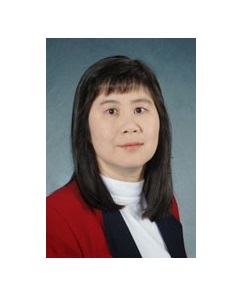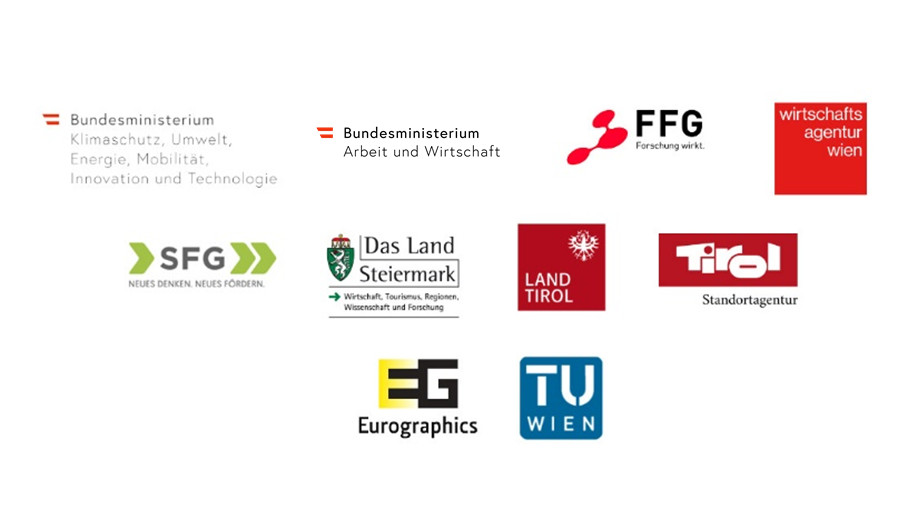

Marie-Paule Cani
Marie-Paule Cani is Professor of Computer Science at École Polytechnique (IP-Paris, France). Her research focuses on 3D modeling and animation, with contributions to implicit surfaces, adaptive simulation methods and interactive natural phenomena. She has recently explored more expressive ways to create virtual scenes, using gestural interfaces to drive smart 3D models. She received the Eurographics Outstanding Technical Contributions award in 2011, was Siggraph Technical Papers chair in 2017, joined the Siggraph Academy and the French Academy of Sciences in 2019, and received the Eurographics Distinguished Career Award and the Kunii Award in 2022.
Visual representations are essential in science, as they facilitate intuition and ease communication. While the 2D sketches used for centuries recently evolved into 3D contents, the latter are generally not responsive: they do not allow scientists to interact with their models, change hypotheses on the fly and experiment their effects. In this talk, we explore the use of smart 3D environments as visual testbeds in science. We show that a combination of efficient procedural models based on prior knowledge, expressive sculpting or sketching interfaces, and light learning mechanisms, can help to reach this goal. We illustrate this through a variety of examples, from sculpting eroding mountains that express geological knowledge to helping prehistorians explore past ecosystems with flora and animated fauna.

Eduard Gröller
Eduard Gröller is Professor at the Institute of Visual Computing & Human-Centered Technology (VC&HCT), TU Wien, where he is heading the Research Unit of Computer Graphics. He is a scientific proponent and key researcher of the VRVis research center. The center performs applied research in visualization, rendering, and visual analysis. Dr. Gröller is Adjunct Professor of Computer Science at the University of Bergen, Norway. His research interests include computer graphics, visualization, and visual computing. He became a fellow of the Eurographics Association in 2009. Also, Dr. Gröller is the recipient of the Eurographics 2015 Outstanding Technical Contributions Award and of the IEEE VGTC 2019 Technical Achievement Award.
Scalable Interactive Visual Analysis combines computer-supported, interactive, visual representations of (abstract) data with automatic techniques to amplify cognition and facilitate modeling. The talk will start with postulating thought-provoking general theses. In recent years data complexity concerning volume, veracity, velocity, and variety has increased considerably. This is due to new data sources as well as the availability of uncertainty, error, and tolerance information. Instead of individual objects entire sets, collections, and ensembles are visually investigated. There is a need for visual analysis and modelitics as well as, comparative visualization, quantitative visualizations, scalable visualizations, and linked/integrated views. The concepts will be illustrated with various examples from scalable visualization, uncertainty visualization, guided interaction, and immersive analytics. The talk will come back to the initial provocative theses and outline future research directions concerning Scalable Interactive Visual Analysis, e.g., modelitics, biologization of the digital world, fata (future data), immersive analytics, self-adaptive self-explanatory analysis.

Ming C. Lin
Ming C. Lin received her B.S., M.S., Ph.D. degrees in Electrical Engineering and Computer Science from the University of California, Berkeley. She is a Distinguished University Professor, Dr. Barry Mersky and Capital One E-Nnovate Endowed Professor, and former Elizabeth Stevinson Iribe Chair of Computer Science at the University of Maryland at College Park (2018-2022), and an Amazon Scholar. She is also John R. & Louise S. Parker Distinguished Professor Emerita of Computer Science at the University of North Carolina (UNC) - Chapel Hill, and was an honorary Distinguished Professor (Yangtze Scholar) at Tsinghua University in China and University of Sydney in Australia. She received several honors and awards, including NSF Young Faculty Career Award, Honda Research Initiation Award, UNC/IBM Junior Faculty Development Award and Hettleman Award for Scholarly Achievements, Beverly W. Long Distinguished Term Professor, IEEE VGTC VR Technical Achievement Award, Washington Academy of Sciences Distinguished Career Award, and 13 best paper awards. She is a Fellow of National Academy of Inventors, ACM, IEEE, Eurographics, ACM SIGGRAPH Academy, and IEEE VR Academy. Her research interests include computer graphics, robotics, and human-computer interaction, with focuses on physically-based modeling, sound rendering, haptics, algorithmic robotics, virtual environments, interactive techniques, geometric computing, and distributed interactive simulation. She has (co-)authored more than 300 refereed scientific publications and co-edited/authored four books.
Keynote: Building and Interacting with Digital Twins in the Metaverse
The Metaverse introduces a shared, immersive space that bridges the physical and digital worlds, allowing us to experience life in ways otherwise not possible. I will present an overview of research necessary to construct the Metaverse and interact with digital twins. This lecture will provide a survey on recent advances that integrate classical model-based methods and statistical learning techniques to tackle challenges in reconstructing physical reality from diverse forms of data and in interacting with the Metaverse. These approaches offer new insights for understanding complex collective behaviors, developing better models for complex dynamical systems from captured data, enabling more effective design and automation, healthcare, e-commerce, education, and more. I’ll conclude with possible future directions and open problems.

Anders Ynnerman
Professor Anders Ynnerman received a Ph.D. in physics from Gothenburg University, Sweden. During the early 90s, he was at Oxford University, UK, and Vanderbilt University, USA. Since 1999, he holds the chair in scientific visualization at Linköping University and is the director of the Norrköping Visualization Center C. Ynnerman is a member of the Swedish Royal Academy of Engineering Sciences and the Royal Swedish Academy of Sciences. In 2007, Ynnerman was awarded the Akzo Nobel Science award, and in 2010, he received the Swedish Knowledge Award for dissemination of scientific knowledge to the public. In 2017, he was honored with the King’s medal for his contributions to science, and in 2018, he received the IEEE VGTC Technical Achievement Award.
This talk will take its starting point in the on-going convergence of exploratory and explanatory visualization paradigms into “Exploranation”. Based on the general availability of processing power, access to data and ever improving visualization methods, explanatory visualization can be data driven and fully interactive. This leads to a paradigm shift in visual learning and communication, enabling a new generation of installations and demonstrations at public venues such as museums, science centers and planetariums. At the same time, explanatory methods can pave the path for new approaches to exploration and workflows for domain experts. The talk will address the underlying technical research, but also use many examples and interactive demonstrations to illustrate the introduced concepts and how they shape the future of visual learning.
Erst wenn Sie auf den Button "Google Maps laden" klicken, wird die Google Map geladen. Dadurch werden persönliche Informationen an Google übertragen und Cookies gesetzt. Diese Einstellung wird für 6 Monate gespeichert.
